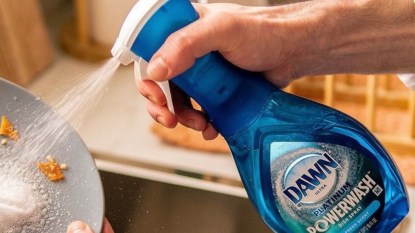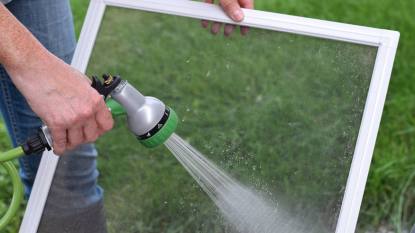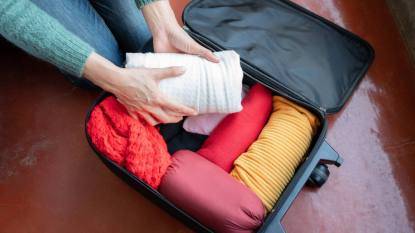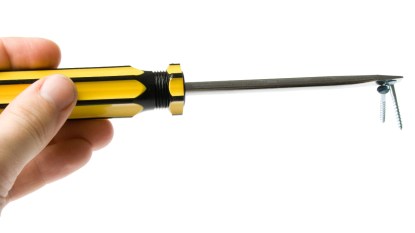Are You Working Too Hard? Check Out Our Cleaning Checklist To See What To Let Slide
It's a lot less often than you think

Sure, keeping a clean house is vital to keeping your household running smoothly, staying health and feeling happy. But the daily grind of keeping things clean can be overwhelming and cause unnecessary stress and exhaustion. Here, experts share how often you should actually clean different areas of your house, so you can get spend more time enjoying your home than cleaning it.
Bedding: Check it off your cleaning checklist once every 2 weeks
“Washing bedding regularly helps remove sweat, oils, dead skin cells and allergens that accumulate over time,” says home expert Melissa Riker of The Happier Homemaker. “It promotes better hygiene, prevents the buildup of dust mites and bacteria.” And while washing your bedding, including sheets, pillowcases, blankets and duvet cover, once weekly is encouraged in keeping a clean and healthy sleeping environment, Riker says it’ perfectly fine to wash these household items once every two weeks.
For best results when washing them less frequently: Wash bedding on a hot temperature setting that reaches 140°F or higher to kill dust mites, bacteria and viruses embedded in the fabrics.
Sofa: Check it off your cleaning checklist every two weeks
A sofa can become caked with crumbs from late-night snacking and pet hair from your furry friend to general dust and dirt that accumulates over time. Many cleaning experts encourage a regular weekly vacuuming for sofas, couches and upholstered seats, but if you don’t see much debris accumulated, you can go up to two weeks between cleanings.
“Simply vacuum the areas with a fabric brush attachment to get rid of crumbs, dust, dirt and pet hair,” says Riker. To nix pet hair between vacuum sessions, keep a pair of rubber gloves nearby, slip them on and swipe your hands over the hairy areas; toss hair into the trash. The rubber naturally grips the hair from fabric. Click through for easy ways to clean stains from any upholstery.
Bath mats & towels: Check off your cleaning checklist once a week
Bath mats add cozy, spa-like comfort to your bathroom floor, but the wetness they absorb can cause them to become a breeding ground for mold and mildew. To prevent or kill any potential mold or mildew growth, it’s recommended that bath mats be washed once weekly in cold water to clean them and preserve their color. But you can potentially go longer between washings by simply hanging the mat over a towel bar and allowing it to air-dry fully after you’re done showering.
Bath towels can go a full week before they need washing, but similar to mats, airing them out is key. Keep them hung up and exposed to air flow so they can dry out between uses, and wash on a hot temperature setting that reaches 140°F or higher to kill any mold, mildew or bacteria. Click through for more genius tips to getting fresh-scented towels.
Tea towels and dishcloths: Check them off your list every few days
If you primarily use your dish linens to wipe your hands after washing them at the sink, you can wait two to three days between washes. “Frequent washing helps remove germs, bacteria and dirt that accumulate from regular use, and it maintains better hygiene and prevents the spread of potential contaminants,” says Riker. However, tea towels and dishcloths that are used to clean up raw meat, poultry and seafood should be tossed into the wash immediately to avoid harmful bacteria growth.
Also smart: Consider designating tea towels for different uses, like one for food prep and one for drying dishes. That way you won’t have to cross them both off your cleaning checklist daily.
Similar to bedding, it is suggested that tea and dish towels be washed on hot (at least 140 °F) to kill nasty germs and bacteria.
Children’s toys: Check them off the list once a week
While some experts suggest cleaning toys daily to prevent the spread of viruses and bacteria, regular cleanings can be determined by the number of times the little ones in your life pick up and play with their favorites. “Frequently handled toys or toys that a child has played with while sick should be cleaned daily, while others that are used less frequently can be cleaned once per week,” says Riker.
To clean most toys quickly, simply wipe them down with a mild dish soap and water solution or a disinfectant wipe, like Clorox Bleach Free Wipes (Buy from Amazon, $3.38), she says. Soft toys, like teddy bears, can be cleaned in the washing machine at a cold temperature and on the delicate cycle to prevent damage.
Makeup brushes: Check them off the list every twice a month
To protect your skin from any harmful bacteria that can linger in your makeup brushes, the American Academy of Dermatology Association suggests washing the tools every seven to 10 days. While it’s important to wash brushes that are used for liquids, cream foundations and eyeliners on that suggested schedule Riker notes that you can wait between seven to 14 days to clean powder eyeshadow and blush brushes. That’s because powders are less susceptible than liquid formulas to the growth of bacteria like streptococcus, which can live in the bristles and cause a series of illnesses such as scarlet fever, impetigo and strep throat, if not cleaned regularly.
Riker’s easy steps for cleaning makeup brushes: First, wet them under the faucet (do not immerse them, as this can damage handles depending on their material) and use a mild soap or baby shampoo to lather the bristles. Next, swirl the brush in the palm of your hand until the makeup residue is removed, then rinse with clean water and squeeze out any excess moisture. To finish, reshape the bristles and lay on a clean towel to dry and let dry fully before using.
High-touch items like keyboards, cell phones, remotes, light switches, doorknobs, etc.: Check them off your list once week
Our technology, light switches, doorknobs, appliance handles and more are frequently touched by nearly everyone in our households and can become a magnet for germs. To thwart this, sanitize the high-touch items by wiping them down with a disinfectant wipe at least once per week. Riker suggests sanitizing the hot spots once daily in more high-traffic areas or during cold and flu season when there is an increased risk of spreading germs.
Want to just make your house look clean without doing any cleaning? Watch this YouTube video for sneaky, yet savvy ways to do it!
Looking for more cleaning tips? Check these out:
This Homemade Oven Cleaner Made With Dawn Is the Life-Simplifier You Didn’t Even Know You Needed













